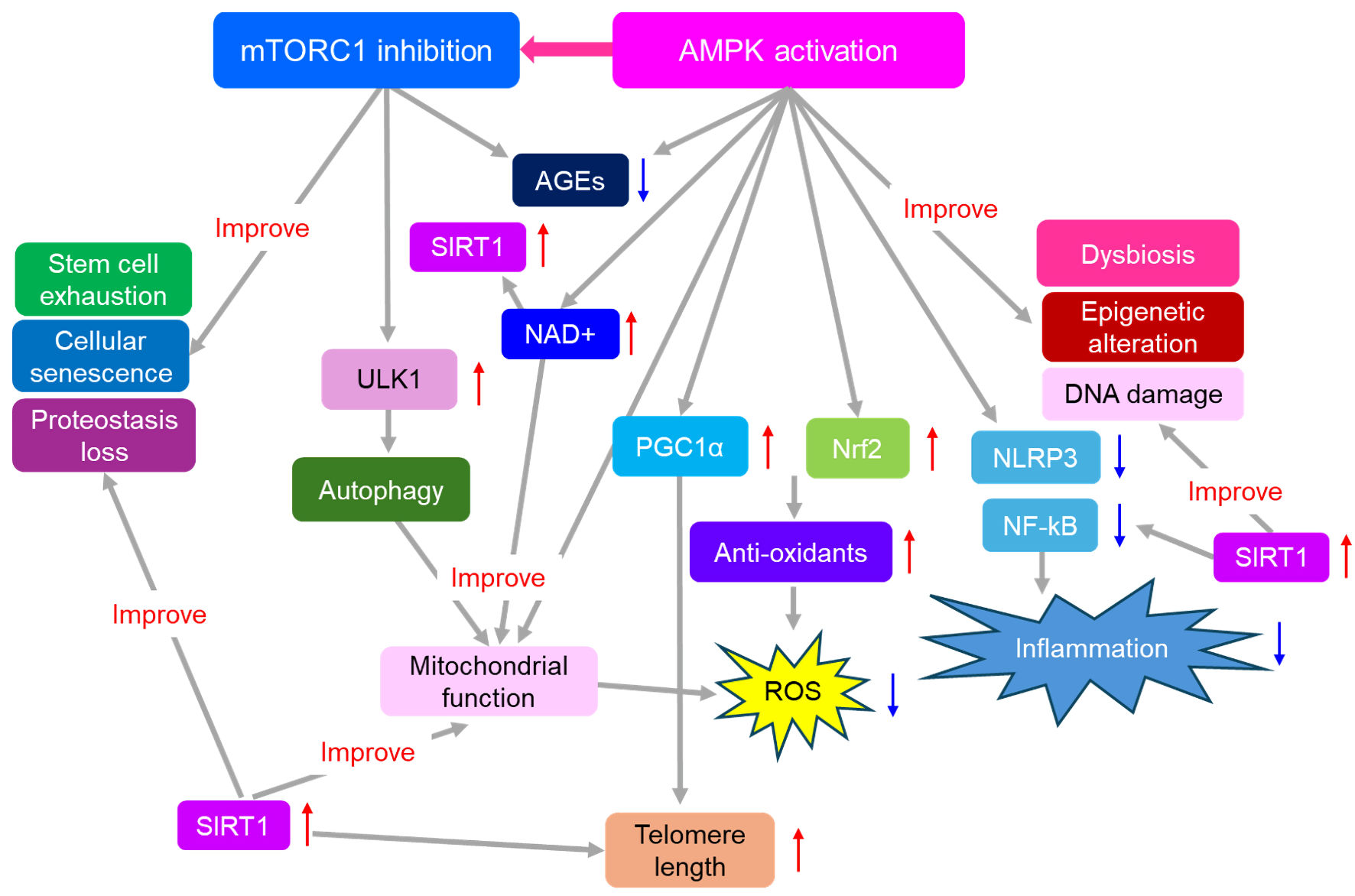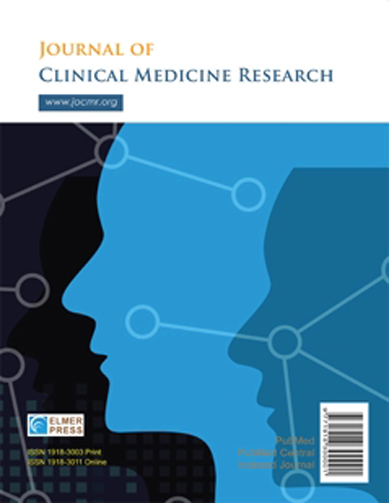Adenosine Monophosphate-Activated Protein Kinase Activation and Mammalian Target of Rapamycin Complex 1 Inhibition: A Mechanistic Rationale for Anti-Aging Therapy in Type 2 Diabetes
DOI:
https://doi.org/10.14740/jocmr6370Keywords:
Aging, AMP-activated protein kinase, Mammalian target of rapamycin complex 1, Metformin, Type 2 diabetesAbstract
Aging is a complicated biological process that induces a decline in the human organs’ structure and function and elevates the risks of aging-related diseases such as Alzheimer’s disease (AD) and type 2 diabetes. Type 2 diabetes accelerates all clinical manifestations of aging. Metabolic disorders in type 2 diabetes are unfavorably associated with all hallmarks of aging, such as inflammation and mitochondrial dysfunction. Adenosine monophosphate-activated protein kinase (AMPK) and the mammalian target of rapamycin complex 1 (mTORC1) are key players in cellular metabolism, and AMPK activation and mTORC1 inhibition improve all hallmarks of aging. AMPK activation and mTORC1 inhibition are favorably associated with diabetic complications. Nutritional interventions, such as caloric restriction, resveratrol, and astaxanthin, have AMPK-activating and mTORC1-inhibitory effects and improve metabolic abnormalities in type 2 diabetes. Anti-diabetic drugs, metformin, sodium-glucose cotransporter-2 inhibitors, and glucagon-like peptide 1 receptor agonists have been reported to have AMPK-activating and mTORC1-inhibiting effects and show prevention of aging-related diseases such as cardiovascular disease. The therapeutic interventions that activate AMPK and inhibit mTORC1 may be optimal treatments for type 2 diabetes from the perspective of anti-aging medicine. Furthermore, senolytics may be a promising, direct anti-aging therapeutic strategy specifically for type 2 diabetes and its complications.

Published
Issue
Section
License
Copyright (c) 2025 The authors

This work is licensed under a Creative Commons Attribution-NonCommercial 4.0 International License.









